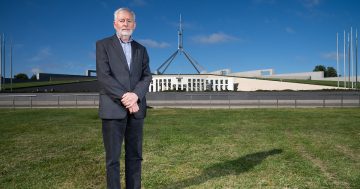Ben Phillips* says research points to lower income families suffering a higher cost of living increase.
 We learnt last week inflation is officially 6.1 per cent – way above the average over the past 20 years of 2.5 per cent.
We learnt last week inflation is officially 6.1 per cent – way above the average over the past 20 years of 2.5 per cent.
This is right in the middle of the Reserve Bank’s 2-3 per cent target band.
But although the rate is now 6.1 per cent, not everybody faces it.
It depends on what you buy.
And there’s one big anomaly right now.
The “basket” of goods and services whose prices the Bureau of Statistics uses to work out the consumer price index is dominated by one item, one most Australians rarely buy.
It is what the bureau calls “new dwelling purchase by owner-occupiers”.
This is mostly the cost of building a new home (excluding the cost of the land) and also the cost of major renovations, but not repairs.
We rarely build a house, and rarely pay up front
Even though very few Australians pay this cost in any given year, and some never pay it, it makes up almost 9 per cent of the total basket, a heavier weight than any other single item in the Consumer Price Index.
By way of comparison, bread – a product most households buy every day – makes up only 0.53 per cent of the index.
“New dwelling purchase” makes up 8.67 per cent.
New dwelling purchase gets such a big weight because it is so expensive, sometimes as much as half a million dollars or more.
Like most other items in the consumer price index, bread is cheaper.
We buy bread more often, but it scarcely counts
Normally when the price of “new dwelling purchase” isn’t moving by much (or by much more than other prices) it doesn’t much move the index.
But material and labour shortages mean that over the past year alone, the cost of new dwelling purchase has jumped by more than 20 per cent.
In the June quarter it was responsible for almost a third – 0.5 points – of the 1.8 per cent increase in the entire consumer price index.
If your interest is the change in household cost of living, the inclusion of the cost of buying a new house is a problem as the very few people who pay it mostly don’t pay it upfront.
They take out a loan which they pay off slowly.
Measured differently, costs didn’t rise 6.1 per cent
Before 1998 the bureau used a different so-called “outlays” approach to measuring inflation that measured payments made to gain access to goods and services.
The resulting weight of housing in the index was much lower.
The bureau still uses the outlays method to calculate separately-published living cost indexes published on Wednesday.
Using these indexes, ANU modelling suggests about 80 per cent of households had a living cost increase below the consumer price index of 6.1 per cent.
The median (typical) increase over the past year is 4.7 per cent, meaning half of households had increases in living costs below 4.7 per cent.
Half of us faced less than 4.7 per cent
Among the households whose living costs have climbed by less than 6.1 per cent would be almost all of those headed by people on the JobSeeker unemployment benefit.
The cost of living for these households climbed by 5 per cent.
Yet in September this year the benefit will increase in total by the increase in the consumer price index, meaning that for once the living standards of households receiving those benefits will move ahead.
Wage earner living costs have increased by just 4.6 per cent, suggesting wage increases in line with the consumer price index would also leave them ahead.
Our modelling suggests high income families suffered a cost of living increase of only 4.5 per cent, compared to 4.9 per cent for lower income families.
For the moment, the lower living cost indexes are a better guide to changes in the cost of living than the consumer price index.
In time, as the increases in the cost of new dwellings subside, the difference will become less stark.
Indeed, as mortgage rates increase over the year growth in the living cost indexes might exceed the consumer price index.
*Ben Phillips, Associate Professor, Centre for Social Research and Methods, Director, Centre for Economic Policy Research (CEPR), Australian National University.
This article first appeared at theconversation.com.











